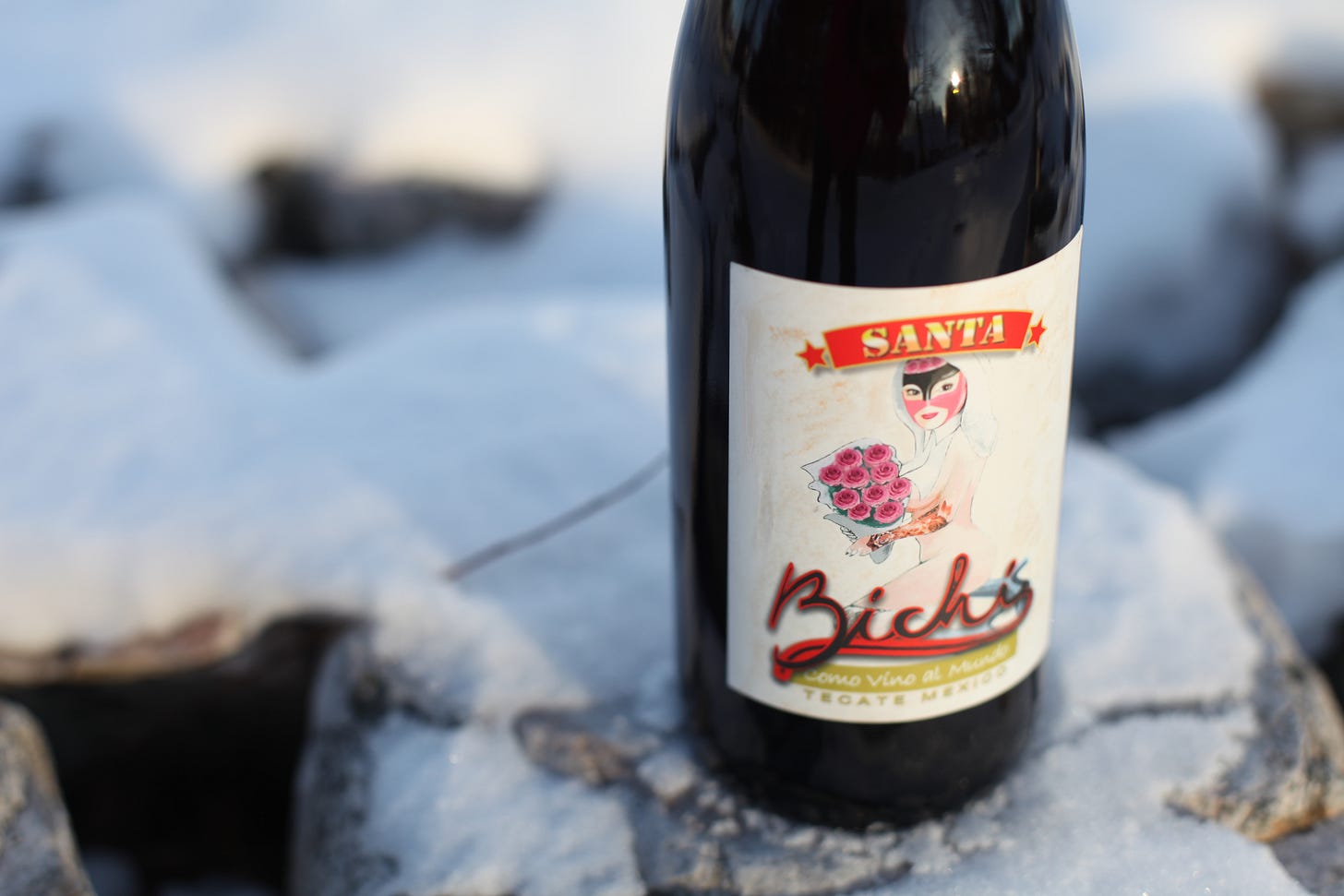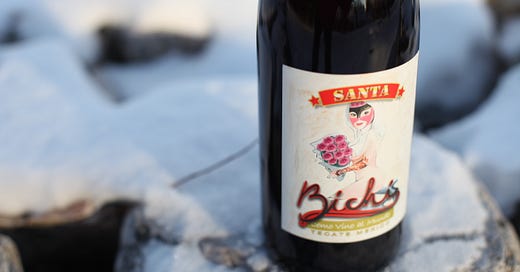¡Ay caramba! Mexican vin de soif from Bichi Wines

One week of drinking (soy) milk with dinner and one day after I saw the bottle of bourbon-barrel Mondavi in the fridge, it was time to get the hell out of what - if you’re the volatile lookin’, gun n’ cuffs n’ taser totin’ border control officer handling my passport - I'll call "home for the holidays, sir"; but in terms of potable wine and personal space, could more accurately be called a desert. Time for a little trip to Santa’s storeroom of sanity-restoring potions more commonly known as Chambers Street Wines, New York, from Connecticut via Mexico by way of Brooklyn for a book reading by Alice Feiring that in the end I mostly missed.
After the reading there were bottles open to taste: three from Bichi Wines, Mexico and one - and I mention this merely for the sake of accurate reportage - that I'm pretty sure I'd already drunk from when we bottled it with Ènek Peterson. But enough of Georgia. What does anyone know about Mexico?
Bichi Wines is the domaine name of the Téllez family who li…
Keep reading with a 7-day free trial
Subscribe to The Morning Claret to keep reading this post and get 7 days of free access to the full post archives.




